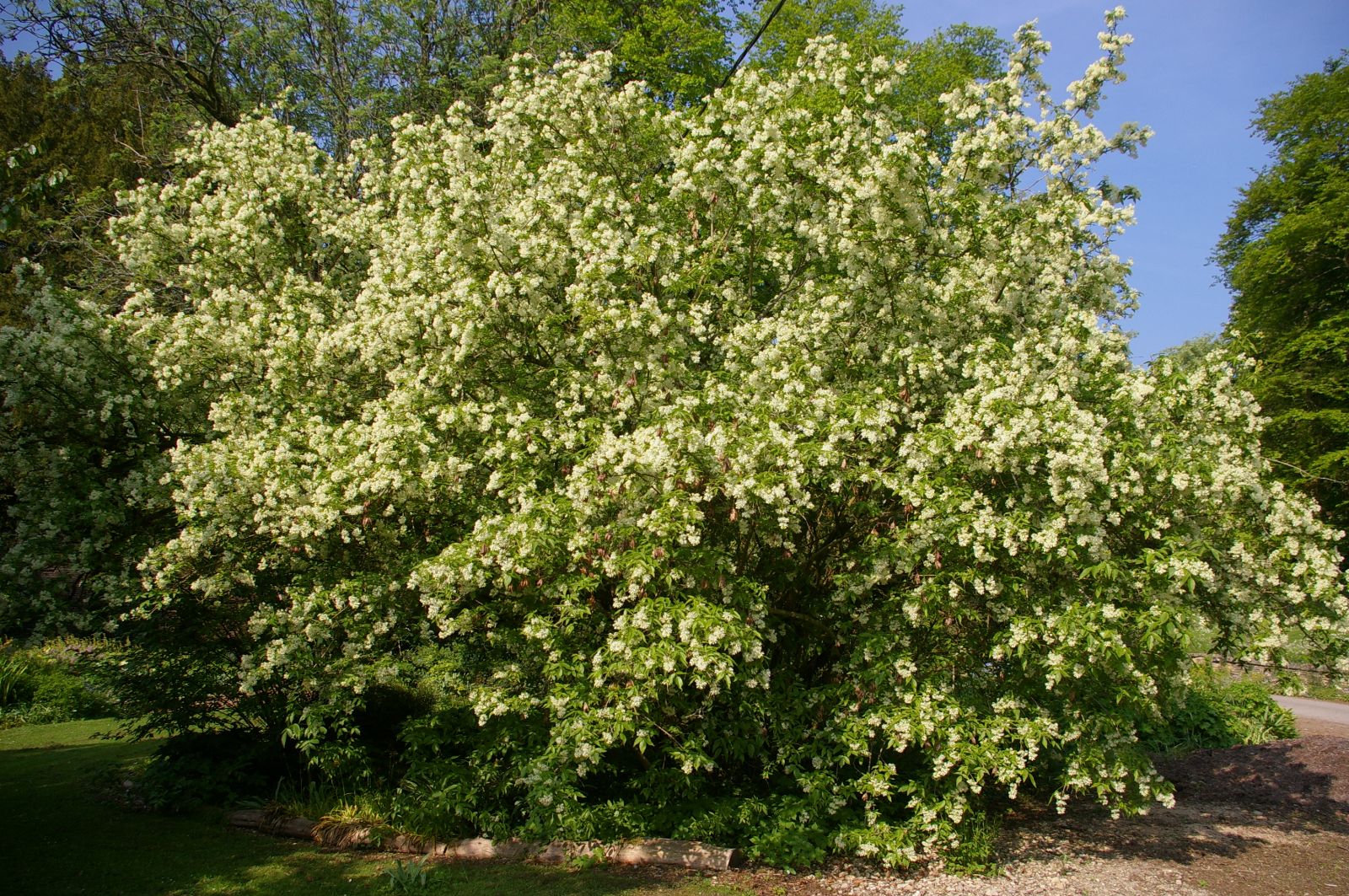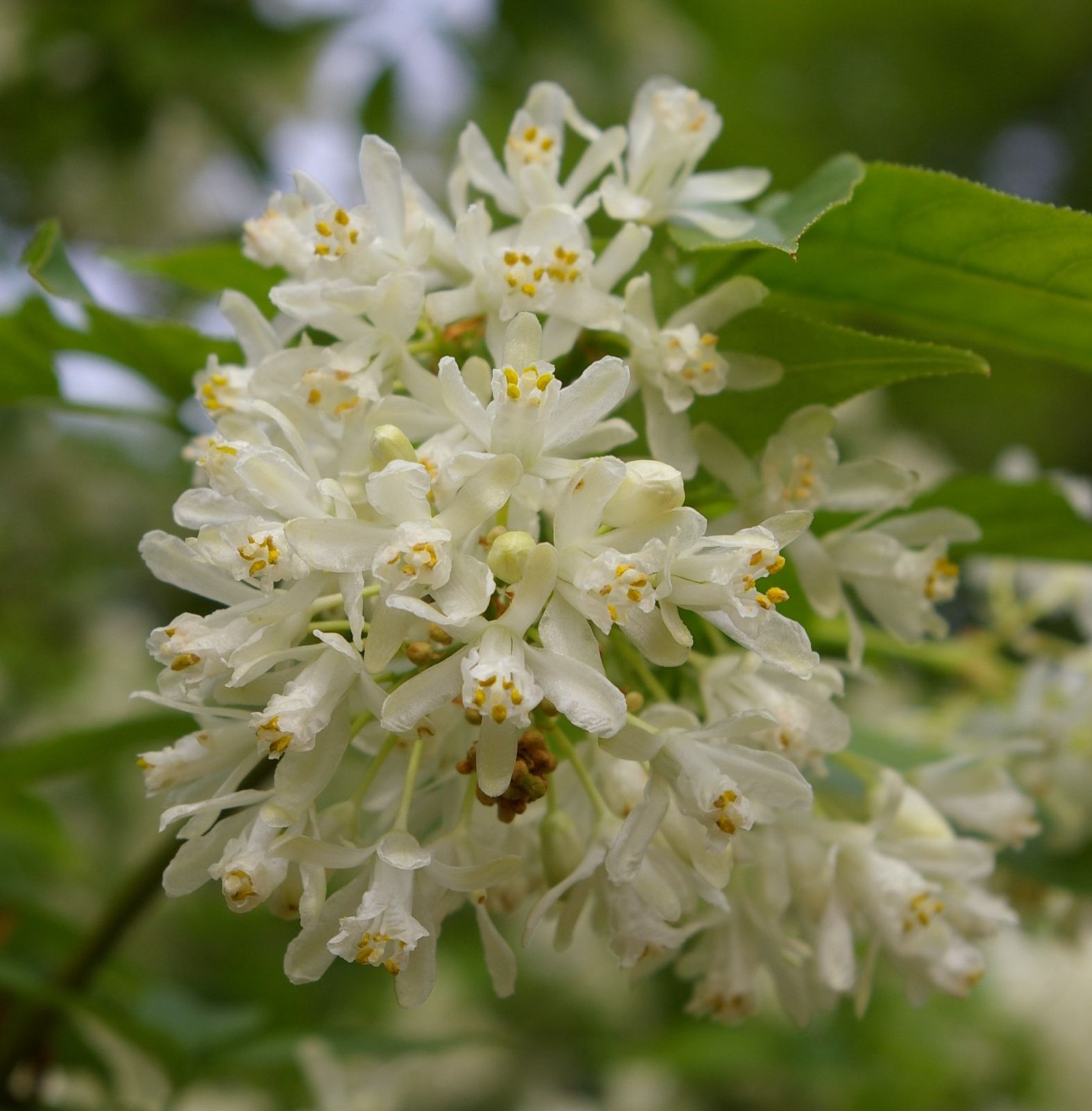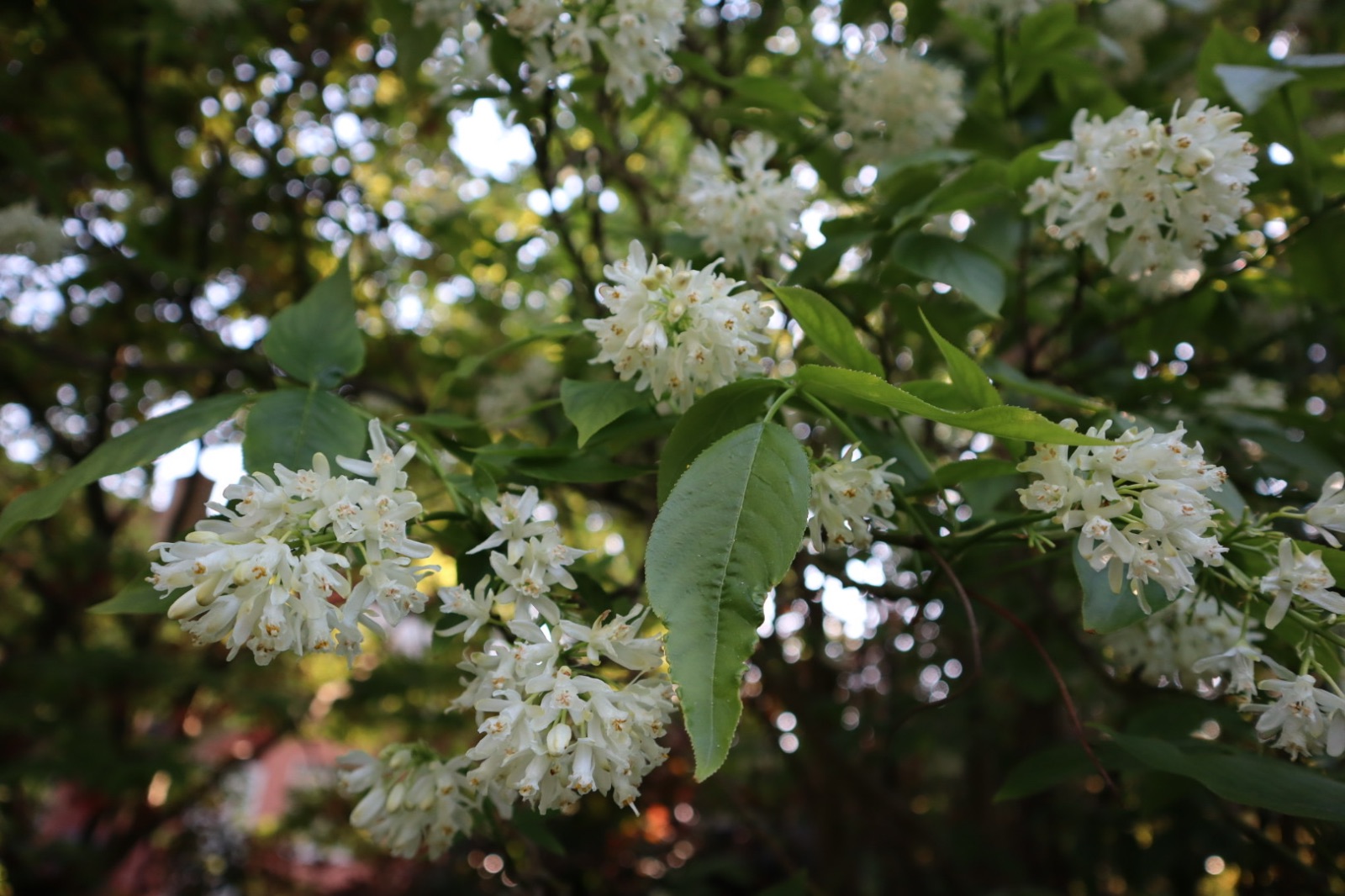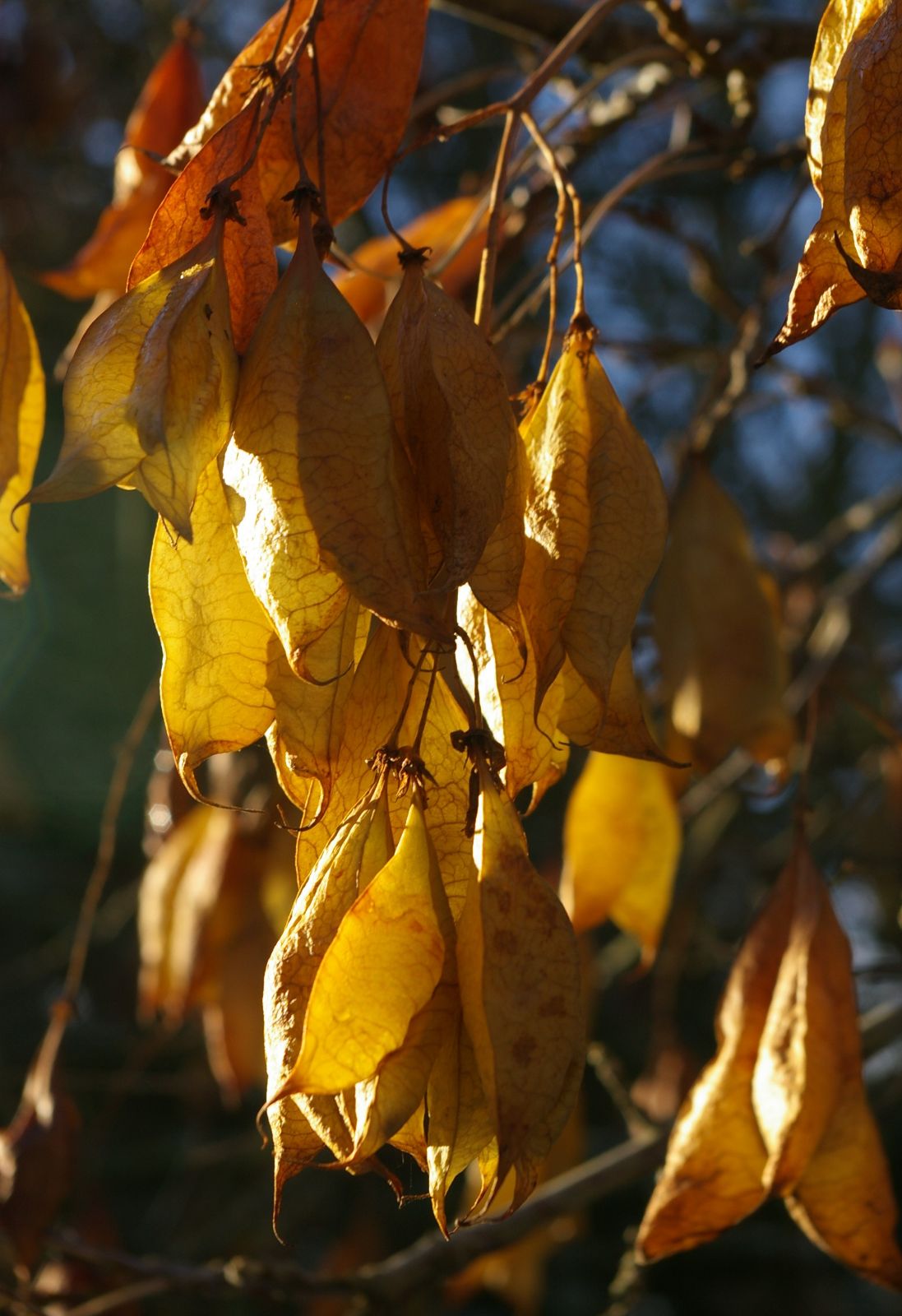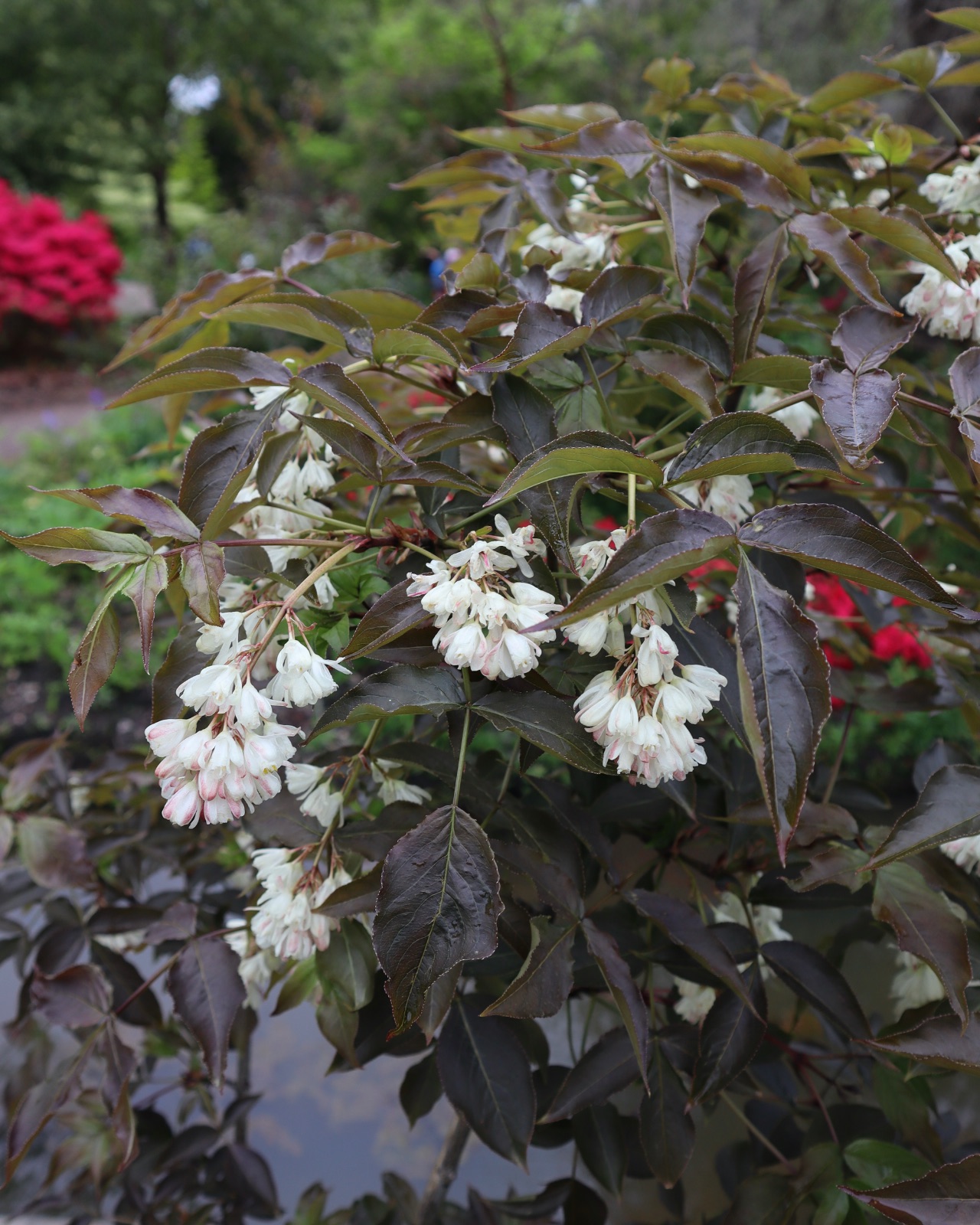Staphylea colchica
Sponsor
Kindly sponsored by
Giles Coode-Adams
Credits
John Grimshaw (2018)
Recommended citation
Grimshaw, J. (2018), 'Staphylea colchica' from the website Trees and Shrubs Online (treesandshrubsonline.
Genus
Large shrub, 4–5(–7) m, with arching stems. Bark pale brown, lightly striated. Leaves on vegetative shoots with 5 leaflets, trifoliolate on flowering shoots; bright green above, glossy paler green below, usually glabrous though occasionally with a few hairs, leaflets 5–8 cm, ovate-oblong, margins with fine teeth. Inflorescence an erect to somewhat drooping panicle 5–10 cm long, with many flowers, emerging just before the foliage. Flowers with pale green spreading sepals, petals pure white, to 18 mm; filaments glabrous, with the anthers not exserted; styles 2–3, glabrous. Capsule with 2–3 locules, 5–8 cm long, terminating in a long point. Seeds light brown. Bean (1981), Krüssmann (1986).
Distribution Georgia Western areas bordering the Black Sea, including Abkhazia. Russia The Russian Caucasus and adjacent regions around the eastern coasts of the Black Sea. Turkey The Turkish Caucasus and adjacent provinces on the Black Sea coast.
USDA Hardiness Zone 5-9
RHS Hardiness Rating H6
Conservation status Not evaluated (NE)
Taxonomic note S. colchica var. kochiana Medwed. has been distinguished on the basis of having pubescent filaments (normally glabrous).
Staphylea colchica is one of the finest large shrubs, reliably covering itself in spring with sweetly scented pale flowers that can compete with any Syringa for charm and fragrance. There is a huge specimen planted by Henry John Elwes at Colesbourne Park, Gloucestershire, some 5 m tall by 8 m across, comprising numerous thick (20–30 cm) arching stems. It is a remarkable sight when in full flower and remains attractive year-round by virtue of the large inflated fruits that change from pale green to straw-coloured and persist through the winter; its seeds have been distributed to many visitors who admire this winter feature. Introduced to European gardens in 1850 (Krüssmann 1986) and to Britain in the late 1870s (Bean 1981), it became popular in the late nineteenth century for forcing, being grown in pots to provide a flowering shrub for house or conservatory, where its fragrance was no doubt much appreciated (Coats 1992).
It remains widely grown, but like many Caucasian stalwarts seems not to have been reintroduced in recent years. Several collecting trips to various areas of its known natural range have been made by teams from RBG Edinburgh since 2005, yet none of these expeditions procured seed or specimens of S. colchica; it would be interesting to know more about its natural distribution and whether it has simply been overlooked by recent collectors, or whether it is in fact quite scarce in the wild. Christenhusz et al. (2017) report that its fermented buds are eaten in the Caucasus.
'Black Jack'
Synonyms / alternative names
Staphylea colchica 'Black Beauty'
An unusual cultivar in this genus, with foliage that emerges green before darkening to purple to provide an effective contrast with the white flowers, tinged with pale pink on the reverse of the sepals. Staphylea colchica ‘Black Jack’ was selected from a batch of S. colchica seedilngs by D. Verman Jr. in Boskoop, the Netherlands, and first released in 2021. The name refers both to the foliage colour and the raiser’s son, Sjaak (Jack) (C. Sanders pers. comm. via J. Aldridge 2022). The richest foliage colour has been observed when plants are grown in good light (J. Aldridge pers. comm.). ‘Black Beauty’ is a near identical cultivar in the trade, probably best treated as a synonym.
var. kochiana Medved
Filaments of stamens hairy (said to be glabrous in the type).

